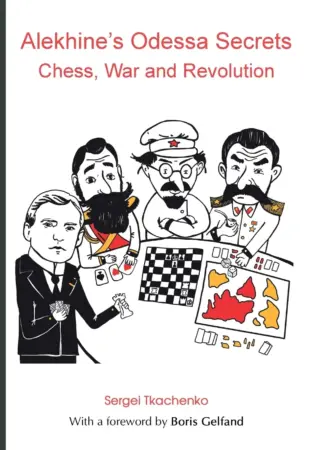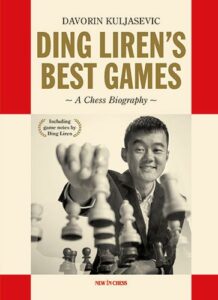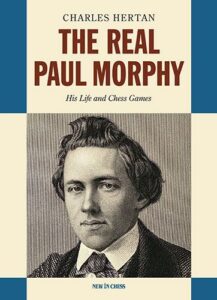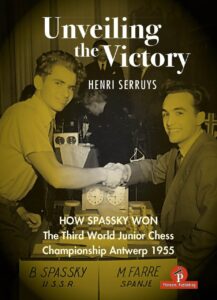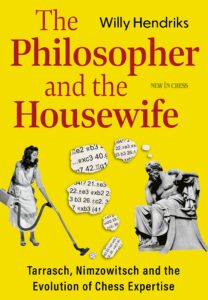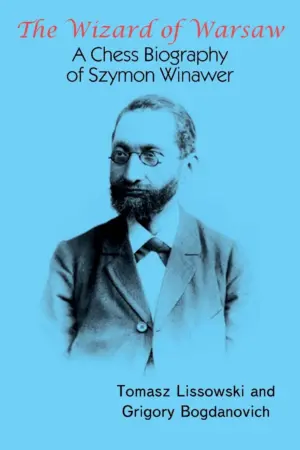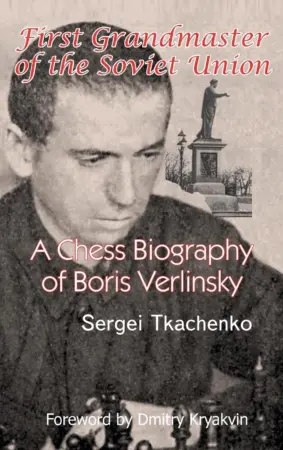Introduction
When I first opened the book I thought I’d read a few pages and get back to work. I ended up reading for hours and was annoyed that I didn’t have my board so that I could analyze positions while reading (even though I could follow without one). Capablanca & Alekhine begins with the 1913 St. Petersburg tournament. I have read many chess books but have never read on this event before and was glued to the book. Capablanca had arrived to St. Petersburg as an already established chess player, you could say a celebrity of sorts, like Carlsen today. People were excited to have him, and he was the tournament favorite. Alekhine, four years younger, was not a fully established player yet.
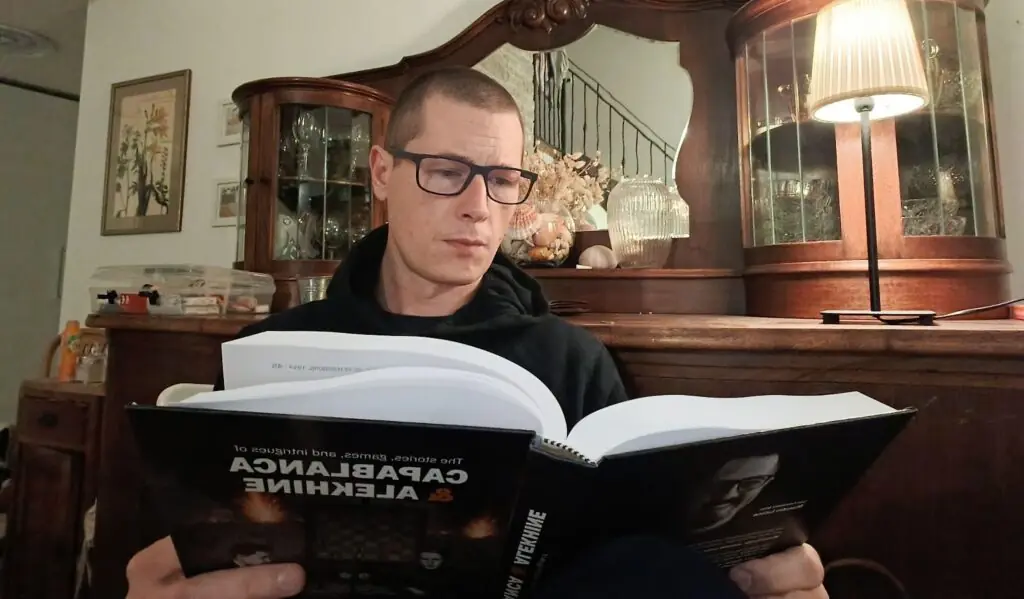
The book begins with their first encounter, a Semi-Slav game I know well (although I had no idea this was the first time they’d played each other). I ended up searching for my old notebook with my own analysis of the game to compare notes.
The first chapter went by in a blink and I just kept on going. It felt like reading Tal-Botvinnik for the first time. To me that’s like being able to watch the Lord of the Rings for the first time again, which I would pay dearly for. Siles managed to find a perfect balance between history, intrigue (as much as that’s possible in the chess world), and instructive game analysis.
“This book is essential to understanding that relationship of friendship and confrontation which, like no other, shaped the history of chess in the first half of the twentieth century.” – Miguel A. Sánchez, author of José Raúl Capablanca, A Chess Biography
Capablanca & Alekhine was at first supposed to be an article for a Spanish chess magazine. Siles became interested in chess history and began exploring the rivalry between Capablanca and Alekhine. He says in the introduction: “I started writing… and writing… and at some point, I realized it was already too long to be just an article. So I kept going. At some point, I realized it would become a book of its own, dedicated entirely to the rivalry and animosity between Capablanca and Alekhine, their games, their encounters, and the chess of their time.”
About the Author
Luis Fernández Siles is a Spanish chess content creator with channels on YouTube, Twitch, TikTok, and various social media platforms, including X and Instagram. For several years, he was the main face of Chess.com in Spanish, although he is now more focused on his own channels he still occasionally appears in some of Chess.com’s Spanish broadcasts. Luis has a large Spanish-speaking chess community. In fact, Capablanca & Alekhine was originally published in Spanish a few months ago, where it was very well received. The version I have reviewed is the new English edition. It is a modest, self-published project made with a lot of love and hard work. Luis is already working on new books!
“My overall conception of this book poses a challenge, as most books on chess history don’t focus much on making the commentaries on the games instructive, while books on game collections don’t delve too deeply into historical topics. I intended the book to be revealing and insightful for those interested in the historical aspect. On the other hand, I tried to ensure that chess enthusiasts find in the games material that provides them with knowledge and is useful for their progress.” – Luis Fernández Siles
Structure of the Book
Capablanca & Alekhine is divided into 16 chapters, starting with St. Petersburg 1913, the first tournament in which the two players faced each other over the board, and ending with the final games and years of their lives in the final chapter. Those in between cover famous tournaments such as the 1938 AVRO, London 1922, New York 1924 and 1927, Nottingham 1936, as well as their World Championship matches. Each chapter begins with a historical introduction to the event or the period, as well as interesting tidbits of information from Alekhine’s and Capablanca’s life and chess career at the time.
Those introductions made me understand the games from those famous events on a different level, even though I’ve seen most of them many times before. Having been given context, I felt I could understand their thinking better, down to choosing seemingly drawish continuations, or risking the game with a single wild throw of the dice.
Each chapter consists of several games, which are the main body of the book.

The History
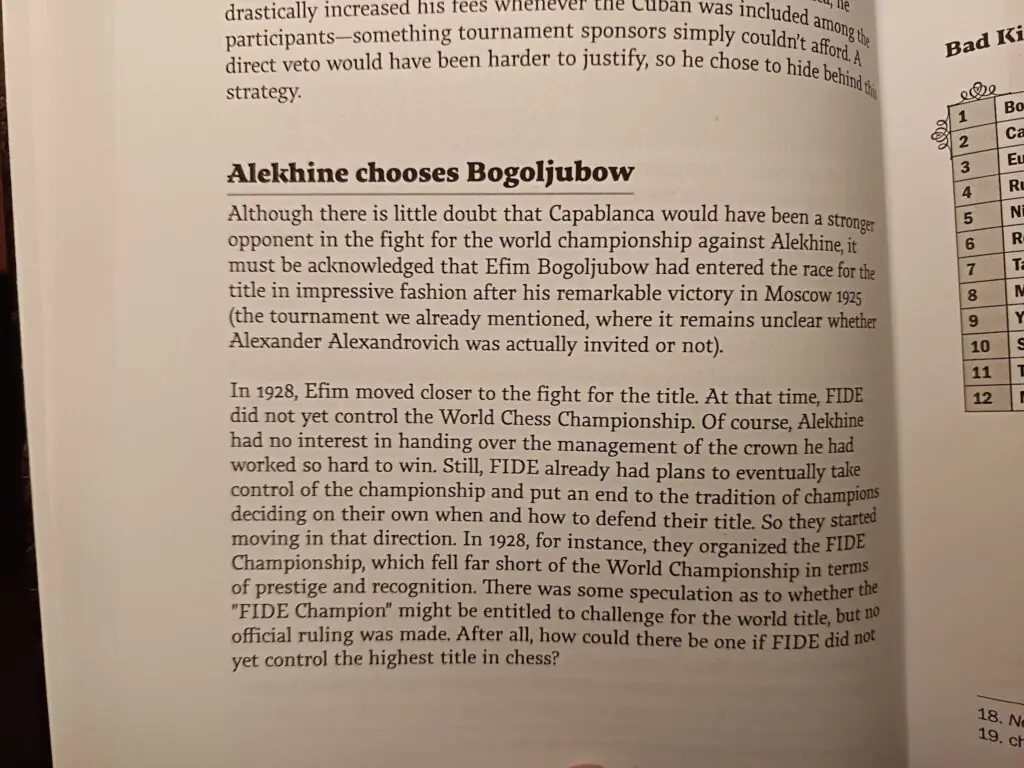
Since I was familiar with most of the games covered in the book before reading it, I was mostly excited about the historical and biographical portion of the book. And I have to say, I was pleasantly surprised. Having just finished Spassky’s Best Games by Karolyi, which ended up being disappointing, I wanted a read rich in history and things I hadn’t read before. Capablanca & Alekhine managed to exceed my expectations. The events in the players’ lives, their rivalry, the famous tournaments I’ve read about many times are depicted well, and you get a quaint feeling of warmth when reading. To mention the Lord of the Rings again, I get the same feeling at the beginning of the first book, before they leave the Shire. If you’re a chess fan, the descriptions in Capablanca & Alekhine should have the same effect on you.
“Rarely have I held in my hands such a good book, especially in its content, but also in its presentation, which is excellent as well. It has everything: wisdom, history, anecdotes, and chess, along with historical photos.” – GM Carlos Matamoros, Grandmaster
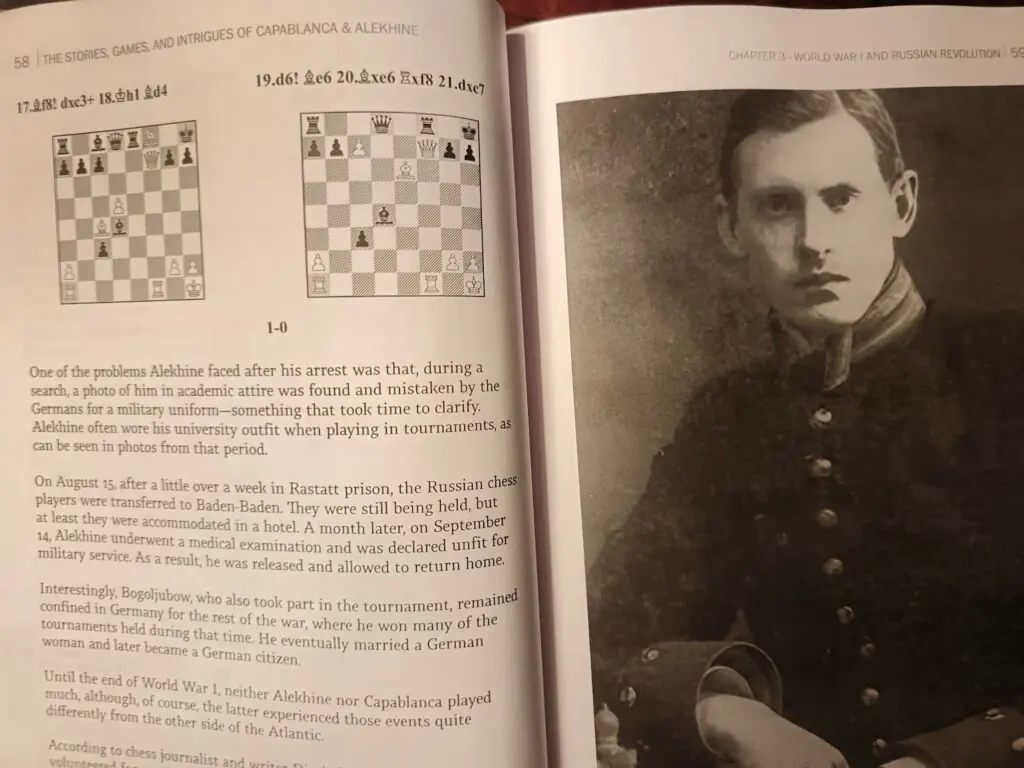
Quality of Annotations
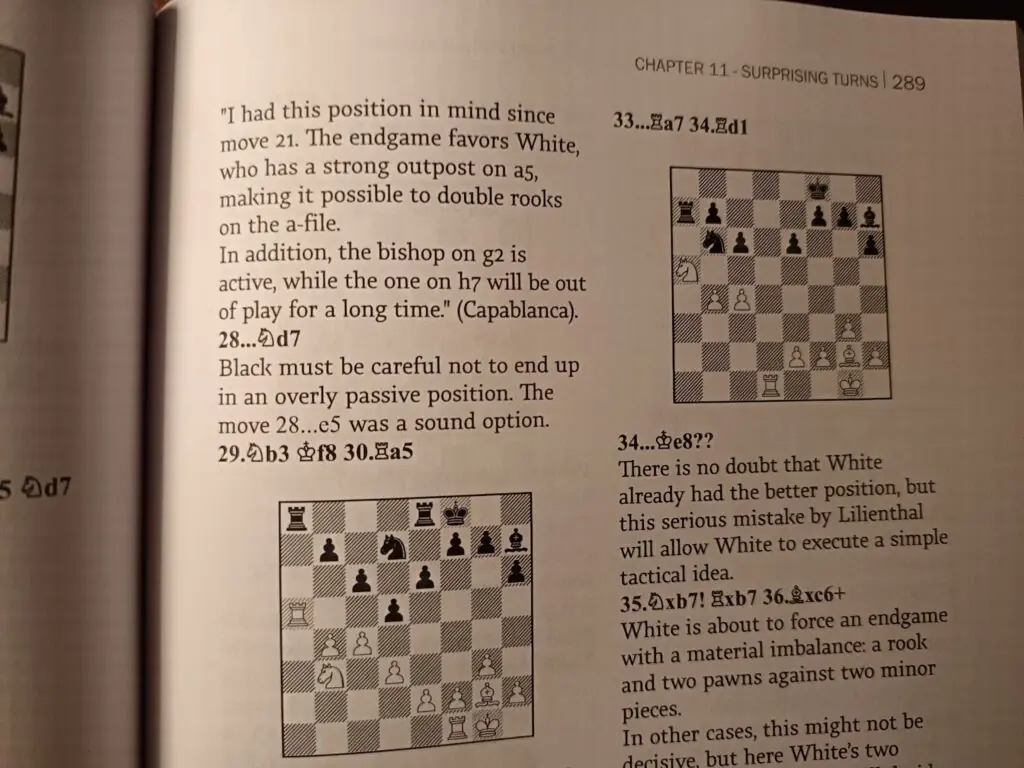
The annotations are good. Far from perfect but good enough to be able to follow the games without a board on the side if you’re an experienced player. As is the case with almost every chess book I read, I feel like they could have been written in greater detail, and that maaaany important sidelines had been omitted, but Capablanca & Alekhine is not a textbook or a workbook. It’s a biography and a game collection, so the lack of instructive analysis is understandable. Still, that’s the only downside of the book as far as I’m concerned.
Difficulty
I think this is a very easy read regardless of rating. If you’re below 1800 or so FIDE, it may be difficult to follow the analysis without a board, as there are segments 5-10 moves long without annotations, but, with a board on the side, even a beginner would find it easy to understand everything. And that’s a good thing. Game collections aren’t meant to be daunting reads.
Conclusion
I enjoyed Capablanca & Alekhine a lot. It’s a good game collection and an even better biography and historical overview of two greatest players of the early 20th century. It should be on the shelves of every chess enthusiast and anyone interested in the history of chess.



